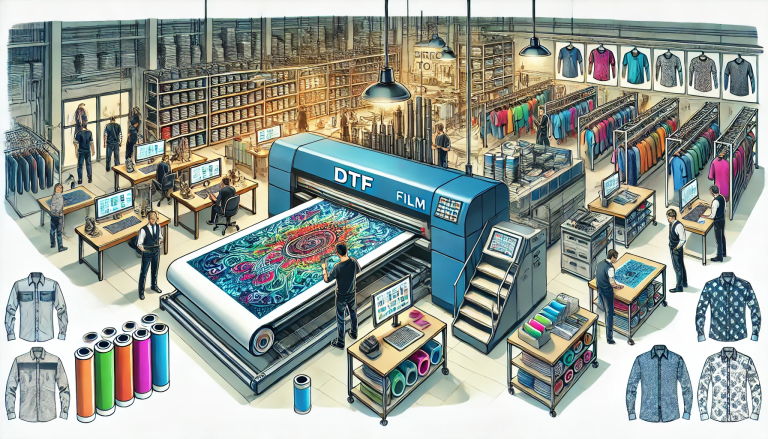“Direct to Film vs. Direct to Garment Printing: Decoding Two Apparel Decoration Techniques” -MAXDTF- UV Magic Film Supplier, UV DTF Adhesive Transfer Decal Manufacturer, Made in China
In the vast world of garment decoration, there are numerous techniques that allow creators to transform plain fabrics into eye-catching works of art. Two popular methods that have gained significant attention are “Direct to Film” (DTF) and “Direct to Garment” (DTG) printing. Both techniques have their own merits, catering to different needs and preferences within the apparel industry. In this blog post, we’ll delve into the nuances of both DTF and DTG printing, comparing their processes, advantages, and potential drawbacks.
Direct to Film Printing (DTF): Adding Vibrancy and Texture
Direct to Film printing, often referred to as “DTF,” is a digital printing technique that involves transferring designs directly onto a special heat-sensitive film, which is then adhered to the fabric using heat and pressure. This method has gained popularity due to its ability to achieve high levels of vibrancy and detail, making it an ideal choice for intricate designs and multicolored patterns.
Advantages of DTF Printing:
- Vivid Colors and Fine Detail: DTF printing can reproduce intricate artwork with sharp details and vibrant colors. The printing process captures nuances that might be lost in other methods.
- Textured Effects: DTF allows for the application of different textures, such as raised, embossed, or even metallic finishes, enhancing the overall visual and tactile appeal of the design.
- Versatility: DTF can be applied to a wide range of fabrics, including cotton, polyester, and blends, making it suitable for various apparel items.
Drawbacks of DTF Printing:
- Additional Steps: DTF printing involves multiple steps, including printing on the film, transferring it to the fabric, and post-printing processes, which can make it a more time-consuming technique compared to some other methods.
- Cost: The equipment and materials required for DTF printing can be costly, making it more suitable for larger production runs.
Direct to Garment Printing (DTG): Embracing Simplicity and Detail
Direct to Garment printing, commonly known as “DTG,” is another digital printing technique where designs are directly printed onto the fabric using specialized inkjet printers. It’s similar to printing on paper, but the ink is absorbed by the fabric’s fibers, creating a soft and breathable finish.
Advantages of DTG Printing:
- Photorealistic Prints: DTG printing excels at reproducing intricate designs, gradients, and photorealistic images with a high level of accuracy and detail.
- Ideal for Small Runs: DTG is a great option for small batch production or even one-off custom pieces, as it doesn’t require setup costs or minimum order quantities.
- Complex Color Blending: This technique handles color blending and gradients exceptionally well, providing a smooth transition between different hues.
Drawbacks of DTG Printing:
- Limited Color Vibrancy: While DTG printing produces excellent detail, the vibrancy of colors might not match that of DTF printing. Colors can appear slightly muted, especially on darker fabrics.
- Fabric Limitations: DTG works best on 100% cotton fabrics, and results can vary on blends or synthetic materials.
- Longevity: Depending on factors such as fabric type and post-print care, the longevity of DTG prints might be less than other techniques.
Choosing the Right Technique:
The decision between DTF and DTG printing depends on various factors, including the desired design, fabric type, production quantity, and budget. If your priority is achieving intricate designs with vibrant colors and textured effects, DTF might be the way to go. On the other hand, if you’re looking for a cost-effective solution for small runs or photorealistic prints, DTG could be a better fit.
In conclusion, both Direct to Film (DTF) and Direct to Garment (DTG) printing techniques offer their own unique advantages and considerations. DTF provides a route to achieving highly detailed and textured designs, while DTG excels in producing photorealistic prints and is well-suited for small runs. Understanding the nuances of each technique will help creators and businesses make informed choices that align with their creative vision and production needs.



